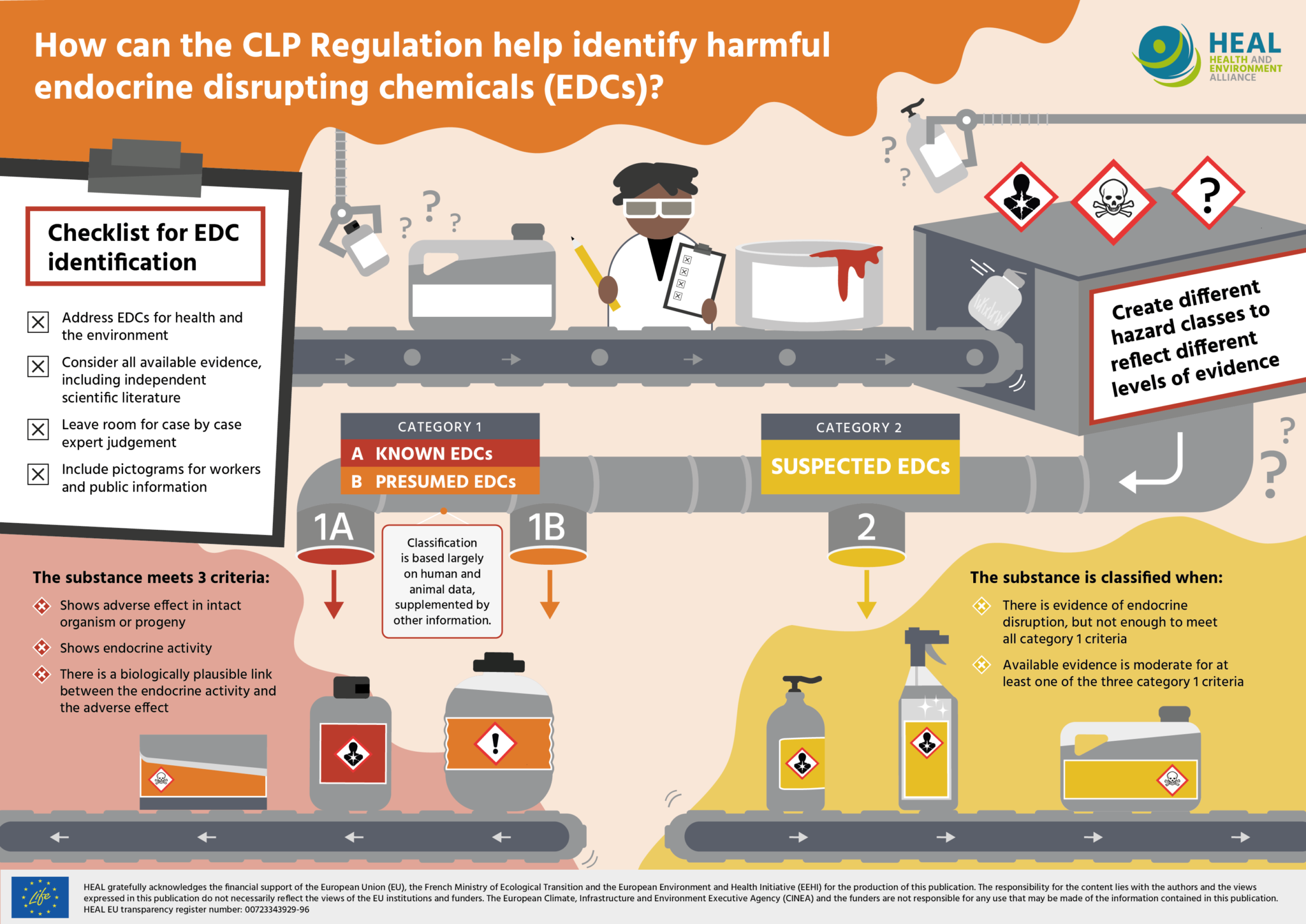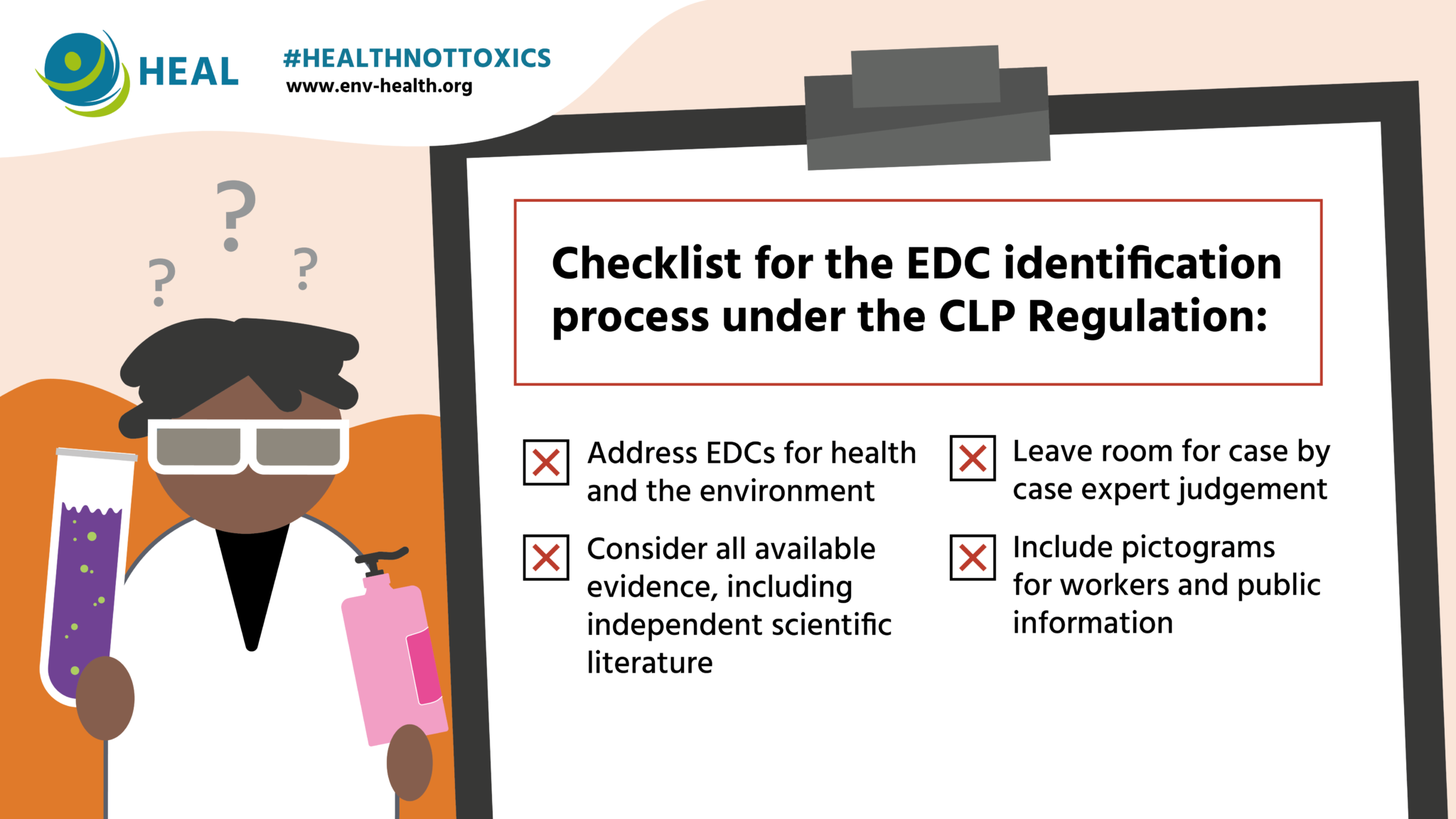Scientific evidence about the negative impacts of endocrine disrupting chemicals (EDCs) on our health and the environment has been piling up for years. Regrettably, there are presently no harmonised criteria to identify such chemicals across sectors, uses and legislations in the European Union.
The Health and Environment Alliance (HEAL), a member of the EDC-Free Europe campaign, has launched a new infographic illustrating how the upcoming revision of the EU Classification, Labelling and Packaging (CLP) Regulation can help solve this problematic loophole within European chemicals laws.

The CLP Regulation stipulates how the EU classifies and communicates about the hazardous properties of chemical substances and mixtures. First introduced in 2008, the regulation has created a single harmonised process to identify and label the hazardous properties of chemical substances and mixtures. It applies across all sectors and uses, and identified hazards are communicated in all EU languages to all actors and consumers.
However, in its current form CLP has several important limitations. For example, it does not cover all the hazards that are relevant to our health and the environment, such as endocrine disruption.
According to HEAL, a new hazard class for EDCs in CLP should be added in order to fully protect human health and the environment, based on the following principles:
- Address substances with endocrine disrupting properties for both human health as well as the environment.
- Consider and reflect all available evidence, including independent scientific literature.
- Include subcategories in order to reflect the varying levels of scientific evidence in the course of EDC identification. As is the case for carcinogens, mutagens, and reprotoxicants, the categories should allow for identification of ‘known’ endocrine disruptors (category 1 A), ‘presumed’ endocrine disruptors (category 1 B) and ‘suspected’ endocrine disruptors (category 2). The latter category is needed to capture those substances, for which there is some evidence of endocrine disrupting properties, but not sufficiently in order to meet the criteria for category 1.
- Leave room for case-by-case expert judgement, since the identification of endocrine disruptors is a complex process.
- Include pictograms and hazard statements for endocrine disrupting chemicals that are easy to understand for workers and the public. Such pictograms and hazard statements should also reflect the subcategories as described above and the endocrine disruptors’ potential to harm future generations and the environment.

Download the full infographic as PDF or PNG format.
Visit HEAL’s campaign page on the CLP reform to learn more about the upcoming CLP reform.
